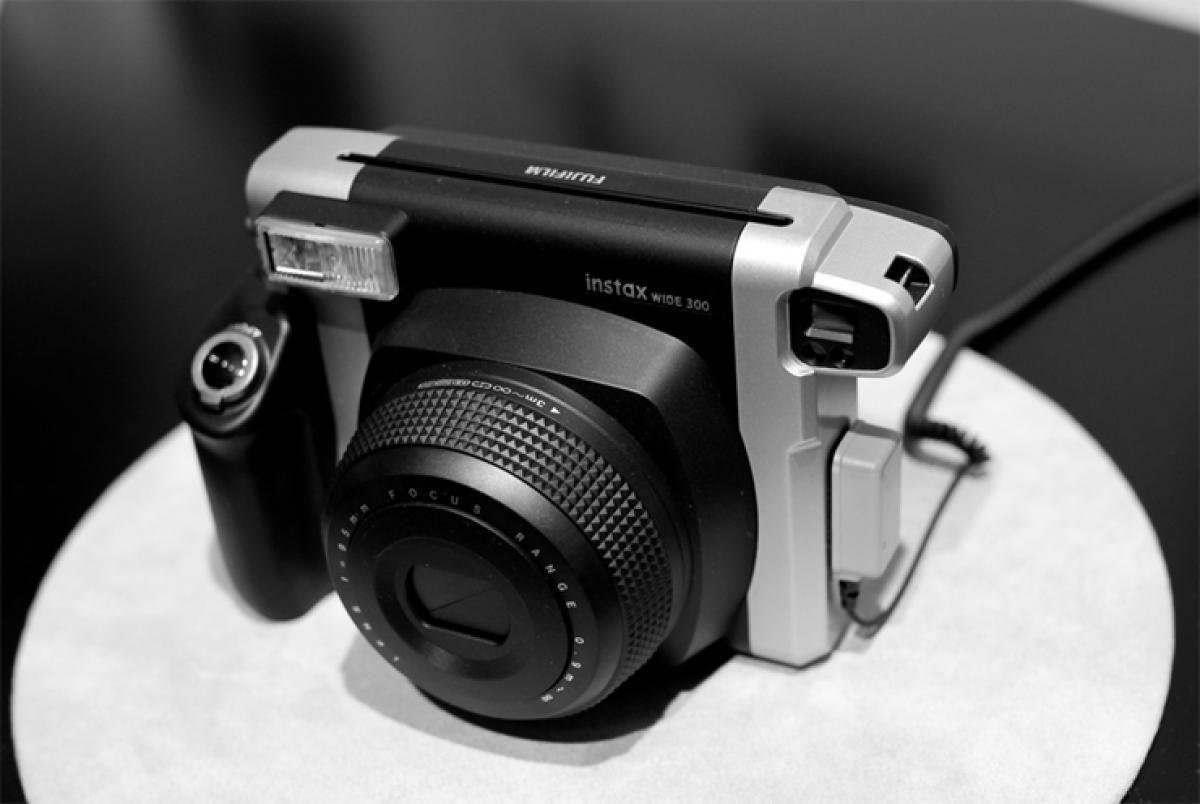Live
- Workshop on ‘Live Agri-technologies’ concludes at SPMVV
- Advancing Biomedical Research with NMR techniques
- Key Highlights of India in 2024
- Expose Opposition’s evil propaganda in villages: Seethakka to Cong workers
- MLA Sudhir focuses on amenities at Srikalahasti rly station
- Chittoor police crack down on drunk driving with 963 cases
- Vision document historical, says Keshav
- YSRCP to boycott elections to WUAs
- Farmers led by YSRCP leaders stage protest against graft
- MLA Dhanpal reminds Cong of promise of gold for brides
Just In

x
Highlights
Polaroid has long been out of fashion and as soon as anyone sees the Fujifilm Instax Wide 300 camera, the idiom \'blast from the past\' percolates to the grey cells. The new instant wide film format camera from Fujifilm\'s stable is the next variant of the Instax 210 and is priced at Rs.9,550. Here is our analysis of the camera:
Polaroid has long been out of fashion and as soon as anyone sees the Fujifilm Instax Wide 300 camera, the idiom 'blast from the past' percolates to the grey cells. The new instant wide film format camera from Fujifilm's stable is the next variant of the Instax 210 and is priced at Rs.9,550. Here is our analysis of the camera:

Design: The camera is just the opposite of voluptuous to say the least. Nor will it draw stares or deep breaths from nerds as well. The Instax Wide 300 is a big camera and measures 3.8 x 7.4 x 4.8 inches. It features an optical viewfinder, a prime lens and a big handgrip with the shutter release at its top. The camera draws its power from four AA batteries and the body is mostly plastic, which is a negative.
Operation: The camera is not at all meant for professionals. It is just for fun as we see it - taking a walk down memory lane and enjoying those special moments right then and there in print. The user has to deal with a chunky grip, a DSLR-style shutter button/power switch combo and a rubber focus zone ring. There is a flash and an optical finder above and to the left of the lens to help frame the picture. At the rear of the device is a monochrome LCD, a flash button and a brightness control toggle. There's even a hard plastic thumb rest to go with the front grip. On the bottom, there's a plastic universal tripod socket.
Features: The focus is generic and so the user needs to learn the art of better photography on the camera even though it is a point-and-shoot. For another, the camera lets you choose between two focus zones - 90cm to 3m, and 3m to infinity. There is a brightness control that could be settled for a rudimentary sort of exposure compensation that lets the user choose between dark, normal and light aesthetics. Unfortunately, the flash cannot be turned off for bright-light shooting.
Cost-effectiveness: The film being used by the camera has only ten shots and is priced at nearly Rs.500 - certainly not cheap.
Verdict: In terms of advantages, the camera uses a close focus adapter and creates good quality physical prints. As for disadvantages, there is limited exposure control, it is heavy to hold and it can be more expensive for users who love to take more pictures. Our bottom line is that if the consumer is fine with spending on the wide film, then taking simple photos can be a lot of fun.

Next Story
More Stories
ADVERTISEMENT
© 2024 Hyderabad Media House Limited/The Hans India. All rights reserved. Powered by hocalwire.com







